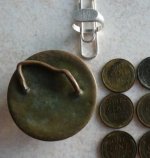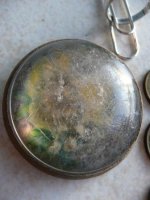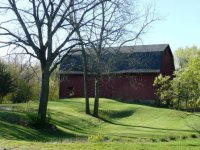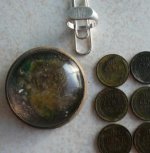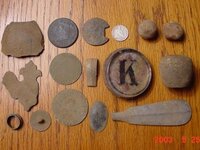Erik in NJ
Silver Member
- Oct 4, 2010
- 4,037
- 3,043
- 🥇 Banner finds
- 1
- Detector(s) used
- Minelab Explorer SE Pro & CTX-3030
- Primary Interest:
- Metal Detecting
Local Boy Digs Amazing Victorian Bridle Rosette at Colonial House!
Got off work a little early today and decided to spend a couple house back at the colonial house that had yielded so much from the last couple hunt.
It started out a bit slow this time, but again didn't let me down with a couple of very nice relics.
The first struck me as very odd when I dug it as I'm not used to digging anything metal with glass attached to it. I thought it was some sort of fancy plug or stopper and dropped it in my finds pouch.
Upon cleaning it up at home, I see that the brass or copper had a nice patina indicating some age probably back to the late 1800s to possible early 1900s. I could see black behind the glass which I figured was simply damage from water. As I sat back and looked at the item I almost fell over when I realized that the "damage" was actually a silvered Gothic-style letter "V" on a black background. But why on Earth would a stopper be monogrammed on the side that you would not see? The metal part with the "handle" appeared to have been gilded at some point, but is mostly worn off. I showed a photo to our resident relic guru--kuger, who immediately realized that this "plug/stopper" was indeed a glass domed bridle rosette! WOW! I have dug some beautiful rosettes before, but this is my first glass domed rosette and having the initial "V" gives me an opportunity to discover who may have owned it and when! The rosette is approx. 1-1/2" in diameter. Thanks again kuger for your sage identification!
The second item was found in a deep plug with about 10 square nails surrounding it. It also had a wood screw through the center of it that I have removed for display. It's a round cover--again about 1-1/2" in diameter depicting what appear to be dragon scales. There are little designs on each scale. A beautiful piece, but I have no idea what it was used for, it's age, or why it was surrounded by so many square nails.
The third item is an enigma. I had found several of these items in England this summer, then dug another back home at an 1800s house. No one could ID it. Then I dug this one on this property. This one is in the best shape of the lot and is the only one with a channel that looks like a belt or rope rode in it. All of them have the three countersunk holes and the central stud. Any help on this item would be appreciated.
It was a short hunt, but I'd have to say that the beautiful rosette was definitely the highlight of the hunt!
Thanks for looking.
Got off work a little early today and decided to spend a couple house back at the colonial house that had yielded so much from the last couple hunt.
It started out a bit slow this time, but again didn't let me down with a couple of very nice relics.
The first struck me as very odd when I dug it as I'm not used to digging anything metal with glass attached to it. I thought it was some sort of fancy plug or stopper and dropped it in my finds pouch.
Upon cleaning it up at home, I see that the brass or copper had a nice patina indicating some age probably back to the late 1800s to possible early 1900s. I could see black behind the glass which I figured was simply damage from water. As I sat back and looked at the item I almost fell over when I realized that the "damage" was actually a silvered Gothic-style letter "V" on a black background. But why on Earth would a stopper be monogrammed on the side that you would not see? The metal part with the "handle" appeared to have been gilded at some point, but is mostly worn off. I showed a photo to our resident relic guru--kuger, who immediately realized that this "plug/stopper" was indeed a glass domed bridle rosette! WOW! I have dug some beautiful rosettes before, but this is my first glass domed rosette and having the initial "V" gives me an opportunity to discover who may have owned it and when! The rosette is approx. 1-1/2" in diameter. Thanks again kuger for your sage identification!
The second item was found in a deep plug with about 10 square nails surrounding it. It also had a wood screw through the center of it that I have removed for display. It's a round cover--again about 1-1/2" in diameter depicting what appear to be dragon scales. There are little designs on each scale. A beautiful piece, but I have no idea what it was used for, it's age, or why it was surrounded by so many square nails.
The third item is an enigma. I had found several of these items in England this summer, then dug another back home at an 1800s house. No one could ID it. Then I dug this one on this property. This one is in the best shape of the lot and is the only one with a channel that looks like a belt or rope rode in it. All of them have the three countersunk holes and the central stud. Any help on this item would be appreciated.
It was a short hunt, but I'd have to say that the beautiful rosette was definitely the highlight of the hunt!
Thanks for looking.
Amazon Forum Fav 👍
Attachments
-
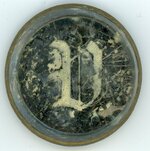 Glass Domed Bridle Rosette107.jpg172.3 KB · Views: 163
Glass Domed Bridle Rosette107.jpg172.3 KB · Views: 163 -
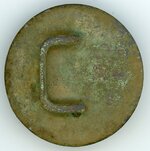 Glass Domed Bridle Rosette108.jpg174.8 KB · Views: 156
Glass Domed Bridle Rosette108.jpg174.8 KB · Views: 156 -
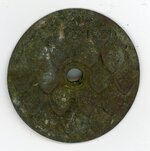 Scaled Cover109.jpg155.3 KB · Views: 145
Scaled Cover109.jpg155.3 KB · Views: 145 -
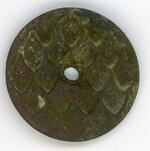 Scaled Cover110.jpg162 KB · Views: 147
Scaled Cover110.jpg162 KB · Views: 147 -
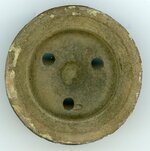 What Is It111.jpg175.1 KB · Views: 147
What Is It111.jpg175.1 KB · Views: 147 -
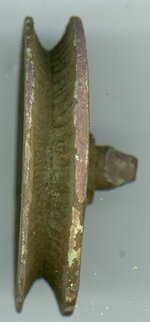 What Is It113.jpg57.4 KB · Views: 141
What Is It113.jpg57.4 KB · Views: 141 -
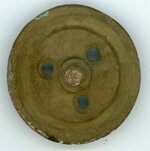 What Is It112.jpg104 KB · Views: 158
What Is It112.jpg104 KB · Views: 158
Last edited:
Upvote
2




